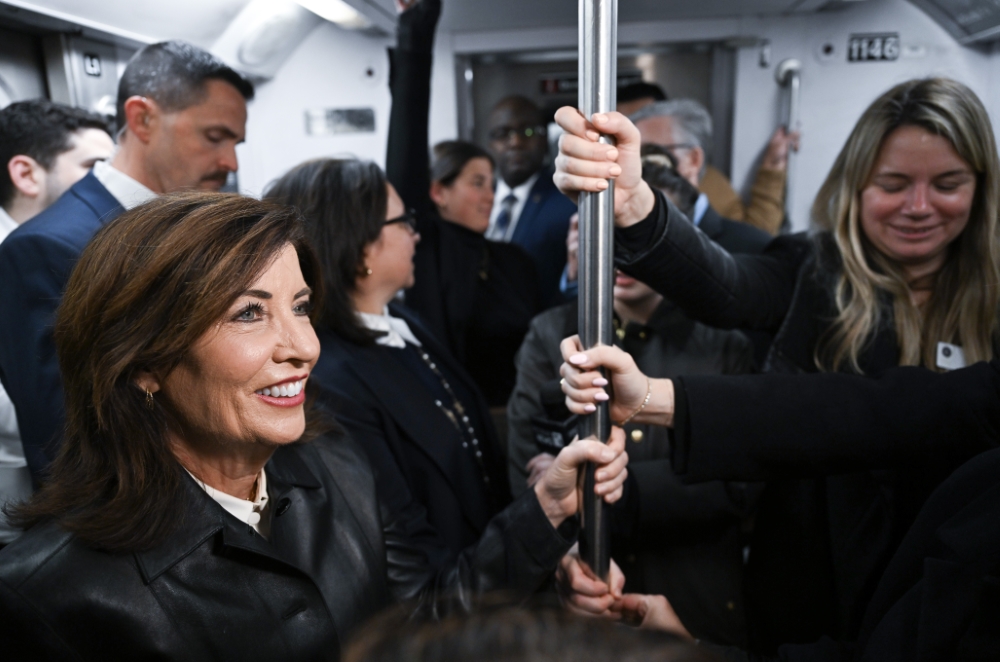New York’s new congestion pricing factors into a larger matrix of office location criteria.
Political observers might not expect New Jersey Governor Phil Murphy and President Donald Trump to agree on much of anything. But neither can hide his distaste for the New York City congestion pricing that went into effect at midnight on January 5, 2025. New U.S. Transportation Secretary Sean Duffy announced in February his department was revoking approval of the just-launched tolling scheme, to which New York Gov. Kathy Hochul responded, “The MTA has initiated legal proceedings in the Southern District of New York to preserve this critical program. We’ll see you in court.”
As for Gov. Murphy, “There could not be a worse time to impose a new $9 toll on individuals who are traveling into downtown Manhattan for work, school or leisure,” he said on November 14, 2024, the very day Hochul announced the plan would be implemented.
Nine dollars is the charge for a passenger vehicle entering the “Congestion Relief Zone” of the city between 5 a.m. and 9 p.m. The charge for a truck or bus is anywhere from $14.40 to $21.60. Taxis and black cars pay $0.75 per trip and app-based for-hire vehicles pay $1.50 per trip “on journeys to, from, within or through the Congestion Relief Zone,” says NYC 311, the city’s official website. The $9 toll is reduced from an original plan to charge $15.
The overall MTA Board 2025-2029 capital plan approved in September would spend a total of $68.4 billion, including $47.8 billion for NYC Transit, Staten Island Railway and MTA Bus Company, $6 billion each for Metro-North Railroad and Long Island Rail Road, $5.3 billion for major projects and expansion, and $3 billion for MTA Bridges and Tunnels.
Site Selection analysis of commuter flow data from the U.S. Census Bureau for the years 2016 to 2020 shows that of the 34 U.S. counties showing flows of more than 1,000 commuters into New York County alone, 21 of them are out of state and 14 of them are in New Jersey, led by 92,561 commuters from Hudson County and 67,924 in Bergen County.

“Congestion pricing adds another layer to the decision-making process, reinforcing the value of transit-oriented developments that provide employees with multiple commuting options.”
— Jerry Sweeney, President and CEO , Brandywine Realty Trust
Altogether, those 14 New Jersey counties account for more than 321,000 commuters into New York County. That’s a big reason why the state in January announced a campaign to promote the New Jersey Re-assigning In-State Employees Program (NJ RISE), administered by the New Jersey Economic Development Authority (NJEDA) since 2023. The $20 million pilot program provides grants to businesses principally located out of state that re-assign New Jersey residents currently assigned to work in a state that employs the “convenience of employer” income taxation rule to work in a New Jersey location. “The grant is equal to the amount of New Jersey Gross Income Tax withholdings of the re-assigned resident employees during one tax year of the business, not to exceed $500,000 in the aggregate per business,” explains an NJEDA release.
“Our fight against congestion pricing isn’t over,” said Gov. Murphy in January “and we won’t allow another state to line its coffers with our hard-earned money.”
Insights from Brandywine
In early February, financial services firm FS Investments, which has over $83 billion in assets and nearly 600 employees, announced it had entered into a 16-year lease for a new global headquarters in Philadelphia’s Schuylkill Yards, owned and operated by Brandywine Realty Trust.
“Brandywine’s West Tower in Schuylkill Yards offered FS state-of-the-art facilities, modern amenities that support attracting top talent and easy access to Amtrak’s William H. Gray III 30th Street Station, facilitating seamless travel between FS’ headquarters and its second and third largest offices in Connecticut and New York, respectively,” Brandywine said.
I asked Brandywine Realty Trust President and CEO Jerry Sweeney for his thoughts on congestion pricing in the site selection matrix.
“As companies continue to reassess their workplace real estate strategies, we’re seeing a dedicated flight to quality, with employers prioritizing locations that offer modern, highly amenitized work environments and seamless access to transit,” he says. “Congestion pricing adds another layer to the decision-making process, reinforcing the value of transit-oriented developments that provide employees with multiple commuting options.”
Transit access is one of the major factors that must be integrated into the mixed-use, highly connected workplace of the future, Sweeney says. Meanwhile, “the return-to-office movement is gaining traction,” he says, “and being led by employers who recognize that the right location — one that reduces friction in the daily commute and enhances employee experience — can be a competitive advantage.”
A recent INRIX report on global traffic congestion found New York showed a 12% increase in commuter transit between 2022 and 2023 and a 17% drop in working from home. “This is likely to increase,” the report stated, “as some major employers have announced plans in 2025 to resume a five-day work week.”
New Place to Play Ball
Also in February, MLB Network, the Major League Baseball content platform, announced that after 16 years in Secaucus, New Jersey, it was moving its operation and office space to Crow Holdings’ newly delivered 207,000-sq.-ft. building at 25 Market Street in Elmwood Park, New Jersey, on the site of a former paper warehouse that stood for 90 years before it was destroyed by fire in 2019.
An MLB Network official familiar with the location decision says the organization explored more than 75 sites in the tri-state area, including sites in New York and Connecticut as well as New Jersey. Commuting was an important factor.
“Knowing where our workforce is centrally located and the feasibility of how they would get to work definitely played a role in choosing this site,” the official said, “in addition to finding the right infrastructure/technical requirements needed to service MLB Network and our partners well into the future.”

